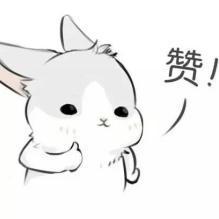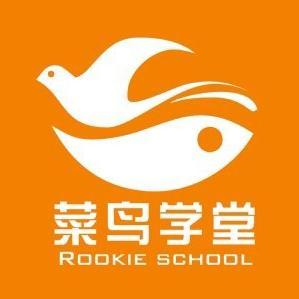Origin of China's e-commerce?
一、1999年是中国电商起步的一年,这一年,C2C模式(Customer to Customer)在中国诞生。淘宝开始一枝独秀。
这一年,中国第一家电子商务C2C平台是王俊涛的8848。
3个月后是邵亦波的易趣,一个月后,后世的巨无霸阿里巴巴诞生,而它旗下的C2C网站淘宝网直到2003年才成立,比第一家晚了4年。
那一年,8848和易趣就是武当和少林,彼此都是如日中天的存在。
但随着21世纪初互联网第一次泡沫危机的来临,8848从此没落,易趣也被美国的ebay收购,成为了ebay易趣,而2003年成立的淘宝,靠着背后软银的资本支持,对ebay的地位发起了强有力的挑战。在3年的时间里,免费的淘宝打败了收费的ebay,后者从此退出中国,一代枭雄淘宝在C2C领域,开始称王直至今天。
二、2008年是中国电商腾飞的一年,这一年,B2C模式(business to Customer)亮相。
天猫和京东王不见王
在淘宝大获成功后,其经验和优缺点也被各路门派充分的吸收和总结,因此,诞生了更加成熟的B2C电商模式,即网上商店模式。
2003年,复制国美模式的京东遭遇非典来袭,野心勃勃却遭遇坎坷的刘强东痛定思痛,决定关闭所有线下门店,主营线上商城。
于是,2008年,刘强东将自己的网站更名为京东商城
2008年,淘宝也随即推出自己的B2C模式——淘宝商城,也就是今天的天猫。今天的天猫已经成为了阿里旗下重要流量来源,历年的双十一活动,从千万到千亿,是B2C模式在中国发展的一个重大缩影。
如今,这两者已经是B2C领域的两座高峰,不过这样辉煌的数据背后,是众多电商网站无声的出现和消失。
譬如同样在2008年前后出现的,红极一时的凡客,不少80后都曾经是它忠实的粉丝和顾客。可惜由于盲目扩张和发展战略的不稳定,2013年后凡客也逐渐销声匿迹。
三、2013年开始,随着传统电商领域版图的逐渐稳固,和社会消费需求的变化,新的电商模式开始在中国大行其道,这就是O2O(即Online To Offline)
个性的消费群体,催生个性的服务定制
如果说C2C与B2C,都是传统行业借助互联网的发展进行升级,O2O则是互联网第一次在商业行为中占据了主动。
由于移动支付的出现,消费者不需要提前准备现金,服务提供方也不需要担心收到假币和赊欠困扰。
因此,在衣食住行领域,O2O完美的契合了双方的需求,如今餐饮业,服务业,团购几乎都采取O2O模式
譬如我们都很熟悉的饿了么、美团。
与B2C相比,O2O里通过线上来揽客来销售线下服务,消费者在线上筛选服务,在线成交和结算,线下体验和享受服务的一种方式。这种模式的用户体验更加的个性化。也更契合90后这一消费主体们的时代特点。
四、近年的P2C电商模式,主打“生活服务平台”。
不论什么样的电商模式发展,其最终都是为了更好的服务C端以及吸引C端,因此,P2C电商模式(production to customer)在近年也越来越多的被人提起。
与传统的电商模式不一样的地方是,不仅仅是买卖的商业行为,P2C力图能够把老百姓日常生活当中的一切密切相关的服务信息,如房产、餐饮、交友、家政服务、票务、健康、医疗、保健等聚合在平台上,实现服务业的电子商务化。
阿里、腾讯所宣称的“新零售”时代,也正是这一思路的体现——依托庞大的用户群体和互联网脉络,覆盖你生活的每一处。
在P2C领域,目前的线下零售业巨头都有着天然的优势,因此,我们看到2014年,零售业上市企业红旗连锁与渤海商品交易所合作,意图打造国内最大的P2C产业电商平台
2017年初,阿里收购大润发,在互联网称霸十年后,重新开始布局新的零售时代。
回看中国电商版图发展史,我们可以看到这样清晰的脉络:
C2C的出现,契合了国人最早的互联网思维和消费需求,而B2C,则是这种需求和服务规范化的发展。最终,在个性化消费的时代,O2O成了B2C的一种特殊的延续,以及P2C时代,每个人都在想着如何才能从简单的买卖行为中,找到服务消费者最完美的方式。
Professional answer
1. 1999 was the year when China's e-commerce started. In this year, the C2C model (Customer to Customer) was born in China. Taobao began to stand out.
In this year, the first C2C e-commerce platform in China was 8848 founded by Wang Juntao.
Three months later, Shao Yibo founded eBay. One month later, the giant Alibaba was born. Its C2C website Taobao was not established until 2003, four years later than the first one.
That year, 8848 and eBay were like Wudang and Shaolin, each of which was in its heyday.
But with the advent of the first Internet bubble crisis in the early 21st century, 8848 declined from then on, and eBay was acquired by eBay in the United States and became eBay eBay. Taobao, founded in 2003, launched a strong challenge to eBay's position with the capital support of Softbank. In three years, the free Taobao defeated the paid eBay, which withdrew from China. Taobao, a generation of tycoons, began to dominate the C2C field until today.
2. 2008 was the year when China's e-commerce took off. In this year, the B2C model (business to customer) debuted.
Tmall and JD.com did not meet
After Taobao's great success, its experience and advantages and disadvantages were fully absorbed and summarized by various schools. Therefore, a more mature B2C e-commerce model was born, namely the online store model.
In 2003, JD.com, which copied the Gome model, encountered the SARS attack. Liu Qiangdong, who was ambitious but encountered setbacks, learned from his mistakes and decided to close all offline stores and focus on online shopping malls.
So, in 2008, Liu Qiangdong renamed his website JD.com
In 2008, Taobao also launched its own B2C model - Taobao Mall, which is today's Tmall. Today, Tmall has become an important source of traffic for Alibaba. The annual Double Eleven activities, from tens of millions to hundreds of billions, are a major epitome of the development of the B2C model in China.
Today, these two are already two peaks in the B2C field, but behind such brilliant data are the silent appearance and disappearance of many e-commerce websites.
For example, Vancl, which also appeared around 2008 and was very popular, had many people born in the 1980s as its loyal fans and customers. Unfortunately, due to blind expansion and unstable development strategy, Vancl gradually disappeared after 2013.
Third, starting from 2013, with the gradual stabilization of the traditional e-commerce field and the changes in social consumption demand, a new e-commerce model began to prevail in China, which is O2O (Online To Offline)
Personalized consumer groups give rise to personalized service customization
If C2C and B2C are both traditional industries that upgrade with the help of the development of the Internet, O2O is the first time that the Internet has taken the initiative in commercial behavior.
Due to the emergence of mobile payment, consumers do not need to prepare cash in advance, and service providers do not need to worry about receiving counterfeit money and debt.
Therefore, in the field of food, clothing, housing and transportation, O2O perfectly meets the needs of both parties. Nowadays, the catering industry, service industry, and group buying almost all adopt the O2O model.
For example, we are all familiar with Ele.me and Meituan.
Compared with B2C, O2O is a way to attract customers online to sell offline services, consumers screen services online, make transactions and settle online, and experience and enjoy services offline. The user experience of this model is more personalized. It is also more in line with the characteristics of the post-90s consumer group.
Fourth, the P2C e-commerce model in recent years focuses on "life service platform".
No matter what kind of e-commerce model develops, it is ultimately to better serve and attract the C-end. Therefore, the P2C e-commerce model (production to customer) has been mentioned more and more in recent years.
The difference from the traditional e-commerce model is that P2C is not just a commercial act of buying and selling. It strives to aggregate all the closely related service information in people's daily lives, such as real estate, catering, dating, housekeeping services, ticketing, health, medical care, and health care, on the platform to realize the e-commerce of the service industry.
The "new retail" era announced by Alibaba and Tencent is also the embodiment of this idea - relying on a large user group and Internet network to cover every corner of your life.
In the P2C field, the current offline retail giants have natural advantages. Therefore, we saw that in 2014, the listed retail company Hongqi Chain Store cooperated with the Bohai Commodity Exchange to create the largest P2C industry e-commerce platform in China.
In early 2017, Alibaba acquired RT-Mart. After ten years of dominance in the Internet, it began to re-lay out the new retail era.
Looking back at the development history of China's e-commerce landscape, we can see such a clear context:
The emergence of C2C is in line with the earliest Internet thinking and consumption needs of Chinese people, while B2C is the development of this demand and service standardization. Finally, in the era of personalized consumption, O2O has become a special continuation of B2C, and in the P2C era, everyone is thinking about how to find the most perfect way to serve consumers from simple buying and selling behaviors.
The origin of China's e-commerce is Alibaba in 1999. Alibaba Group operates multiple businesses and also obtains support in operating a business ecosystem from the businesses and services of its affiliated companies.
Similar Q&A
recommend What is the name of Alibaba's artificial intelligence?
E-c News Continuously pushing e-commerce knowledge to you








Latest Q&A More
-
Do I need a trademark to open a franchise store on Pinduoduo to sell books?
#Pinduoduo#
-
How to withdraw from a Pinduoduo store
#Pinduoduo#
-
How to withdraw from Pinduoduo merchants
#Pinduoduo#
-
How to pay fees when closing a Pinduoduo store
#Pinduoduo#
-
How to withdraw from Pinduoduo
#Pinduoduo#
-
Which store on Pinduoduo is authentic?
#Pinduoduo#
-
Which stores on Pinduoduo can buy genuine products?
#Pinduoduo#
-
How to check the store under Pinduoduo
#Pinduoduo#
-
How to receive Pinduoduo online game products
#Pinduoduo#
-
How to sell the electronic version on Pinduoduo
#Pinduoduo#
E-c News 2025-12-25 14:31:26

- African netizens use China Africa cross-border e-commerce platform for online shopping
- how is the new seller of cross-border e-commerce doing?
- how can cross-border e-commerce Amazon sell on Amazon platform without goods?
- Amazon store opening process and cost analysis!
- Amazon plans to expand its pharmacy business on a large scale and will add same day delivery service

